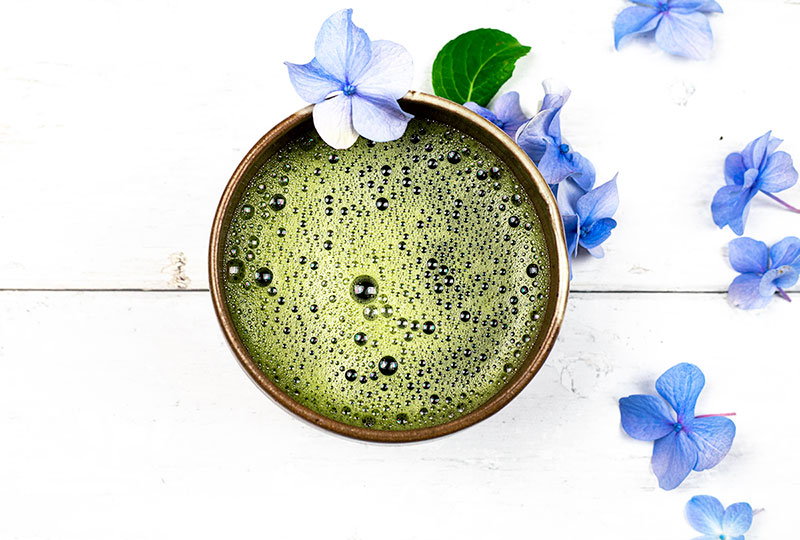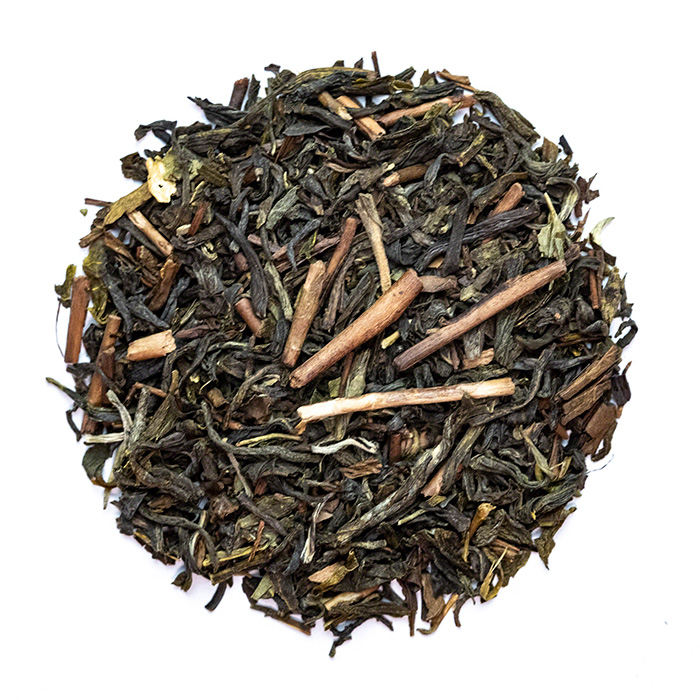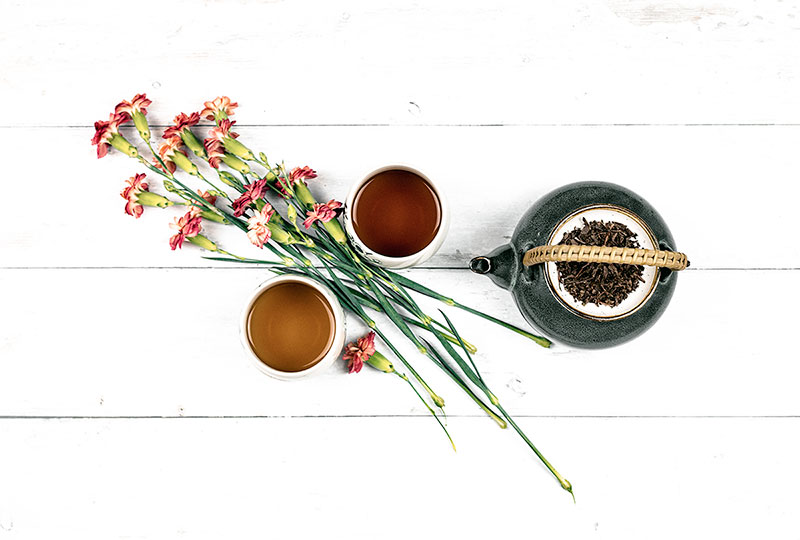Hojicha Tea Guide: Brew, Benefits, Caffeine
Want to drink green tea but don’t like the green flavor? Or want to get the benefits of tea minus the high caffeine content? Try hojicha.
What is hojicha?
Hojicha is a roasted green tea from Japan. It was first made in Kyoto about 100 years ago.
Hojicha is made from the same tea plant as the usual green tea. However, unlike the typical green tea, hojicha doesn’t have a vegetal green flavor. Hojicha is made only from steamed Japanese green teas, mostly by roasting bancha, sencha or kukicha green tea leaves. Roasting changes the color of the leaves and tea liquor, scent, flavor aroma and the chemical composition of tea. That’s one of the reasons why hojicha potentially has a lower caffeine content than other green teas and it’s a great choice for late afternoon tea time.
Hojicha tea leaves have a reddish brown color, and brews into a reddish orange liquor. It’s mostly available as a loose leaf tea.
Hojicha tea Caffeine
Hojicha has less caffeine than other green teas for two main reasons. Firstly, roasting changes chemical composition of tea and potentially reduces the caffeine level. Secondly, the most common type of hojicha is made with more mature tea leaves plucked later in the season. Those leaves have less caffeine than first or second harvest young tea leaves and buds. That means that different types of hojicha tea will also have a different caffeine content. For example, roasted tea from sencha is likely to have more caffeine than roasted tea from bancha or kukicha. Expect about 20-50% less caffeine than in the cup of sencha.
What does Hojicha tea taste like?
Hojicha has a very aromatic, roasted, nutty, slightly sweet and woody flavor and aroma. Leaves can be light, medium or heavily roasted. The darker the tea leaves, the more intense roasted flavor it will have. It’s usually light, especially if it’s made from bancha. Hojicha can sometimes turn bitter if you over-brew it, but it’s much easier to prepare than other green teas. Hojicha made from sencha can sometimes be naturally more astringent. If you like lighter airy black teas or darker oolongs such as Red Robe or Qi Lan, hojicha may be a great tea for you.
How to Brew
Brew hojicha using at least 2 grams of tea per cup of water. If you prefer more intense flavor, add another teaspoon of tea leaves. Bring fresh spring water to a boil and let it cool down to 194- 203°. If you are using cooler water, steep the tea leaves longer. Hojicha can usually tolerate high temperature very well. The best teapot for making hojicha is a Japanese style glazed teapot. Preheat the teapot and a cup by pouring boiled water in and out. Place the tea leaves into the teapot.
Don’t forget to enjoy the intense scent of fresh tea leaves in a heated teapot. It will help you understand and appreciate a wonderful warm roasted scent of this tea before you even take a first sip. Pour hot water over the tea leaves and steep for at least 45 seconds, but no longer than one and a half minute. Re-steep.
Loose leaf hojicha is great for cold brewing and making milk tea too.
Benefits of Drinking Hojicha
Even though the roasting process changes the chemical composition of hojicha tea, studies show that it still has a very high antioxidant activity[1], even higher than oolong or black tea. This makes hojicha one of the best teas if you want to enjoy the health benefits of green tea, but don’t like the fresh vegetal flavor or need to avoid drinking too much caffeine.
Hojicha vs Matcha
Hojicha and Matcha are both Japanese green teas, but they are very different. The only thing they share is the same origin – tea plant Camellis sinensis. Hojicha is usually made from bancha with more mature tea leaves from later harvests. Tea leaves are steamed to stop the oxidation, rolled, dried and roasted.
Matcha tea is a shaded tea, with a very vibrant green color. It’s made from young tea leaves, that are steamed, dried, de-veined and de-stemmed. This gives tencha, a small tea leaf flakes that are ground into a fine powder – matcha.
Hojicha can be ground into a powder too, but it will have a different color, flavor and texture. Hojicha powder is great for making instant tea, adding to desserts or making lattes and milkshakes.

Matcha tea
Where can I get the best hojicha tea?
There are different types of hojicha tea. Depending on your personal preferences, you can choose between very light and slightly sweet woody flavor, or strong full and slightly astringent cup.
The most popular types of hojicha tea are:
- Hojicha made of bancha with usually older and more mature tea leaves
- Hojicha made of sencha with younger tea leaves and stronger flavor
- Kyobancha special type of Japanese roasted bancha from Kyoto made from the very last harvest before the new tea season
There are many other types of hojicha tea today. For example, Kaga boucha or roasted gyokuro kukicha tea or even roasted tencha tea leaves.
Many of them are available in online tea shops. Alternatively, you can make your own hojicha by roasting kukicha, sencha or bancha at home.
Want to try a really unique rare blend? Green Harmony is one of rare teas that blends three very different green teas into a harmonious well-balanced and refreshing blend – sencha, hojicha and Chinese Jasmine green tea.

Green Harmony tea blend with 3 types of green tea
Disclaimer: This article is for informational purposes only. It’s not intended to replace medical advice, diagnosis or treatment. Every person is different and may react to different herbs and teas differently. Never use teas or herbs to treat serious medical conditions on your own. Always seek professional medical advice before choosing home remedies.
References:





